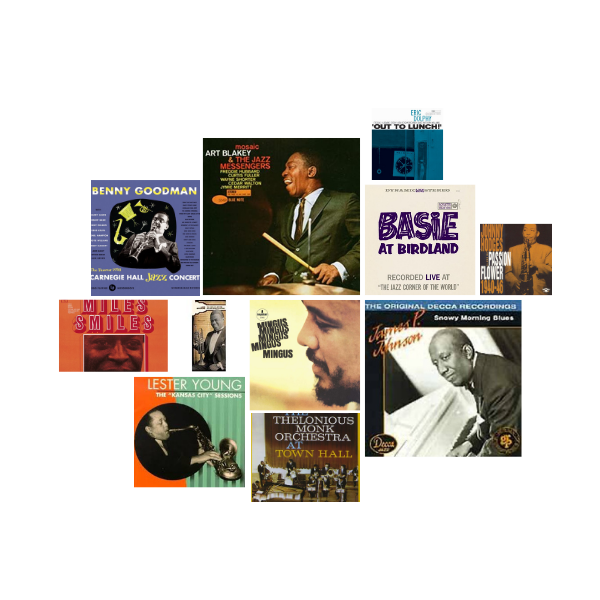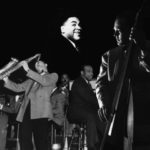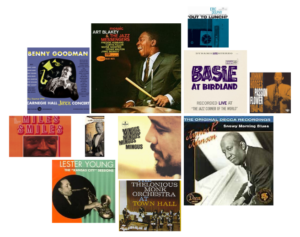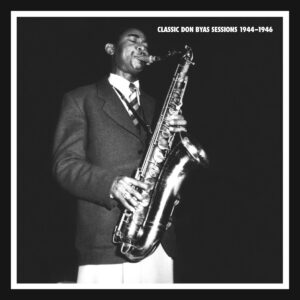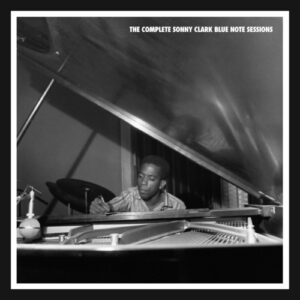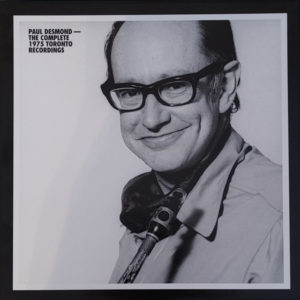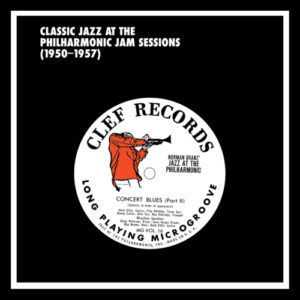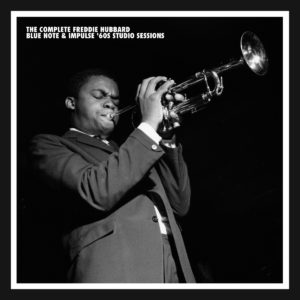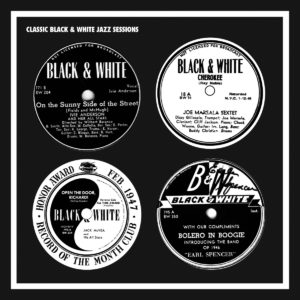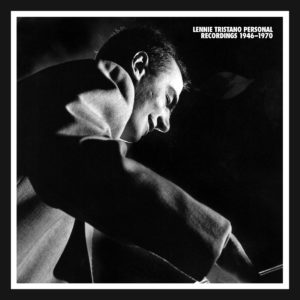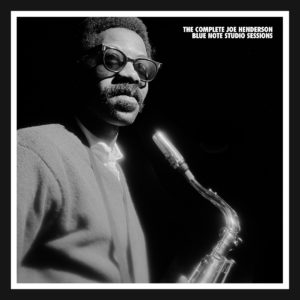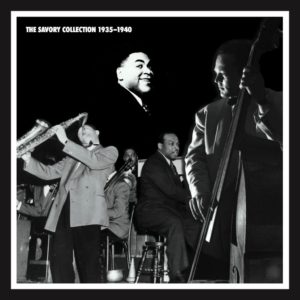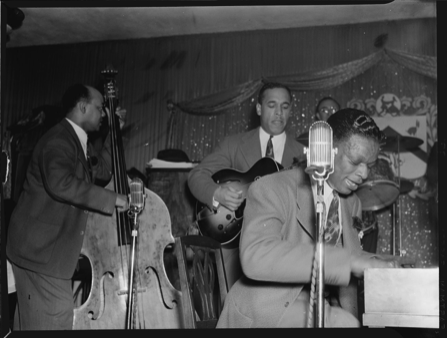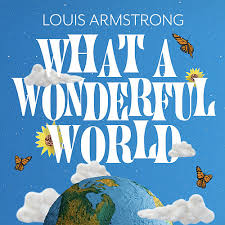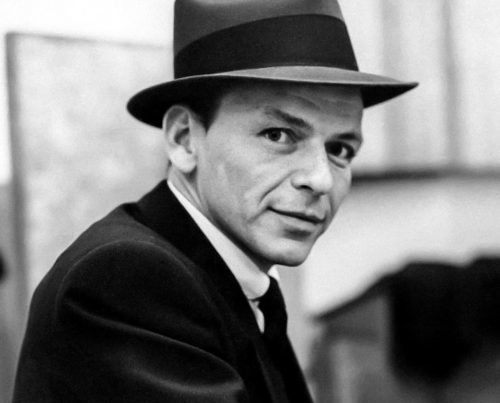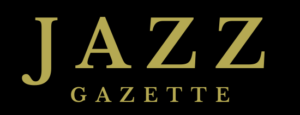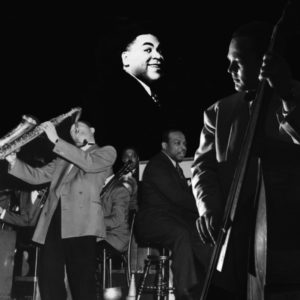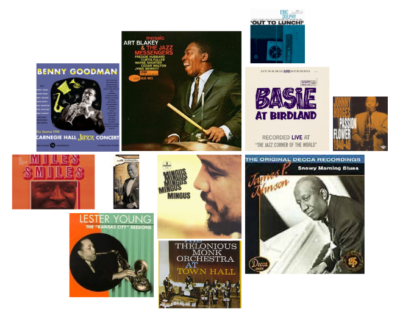
100 Essential &
Best Jazz Albums Of All Time
Page 2/3
MILES DAVIS
MILESTONES
Miles cited the Milestone sessions as “Where I really started to write in the modal form. When you play this way you can go on forever. You don’t have to worry about changesThe challenge is to see how inventive you can become melodically. A brilliant record with the classic quintet.
MILES DAVIS
KIND OF BLUE
One of the best modern jazz albums ever made. With Coltrane, Adderley, Bill Evans and Wynton Kelly, Miles explores blues and lyrical modality.
Miles Davis
Miles Smiles
This is the second and probably the greatest single album by Davis’ mid-sixties quintet (Wayne Shorter, Herbie Hancock, Ron Carter and Tony Williams) with astonishing versions of “Gingerbread Boy”, “Freedom Jazz Dance” and Wayne Shorter’s “Dolores” and “Footprints”. This band exuded empathy and telepathy among its extraordinary members. This just might be Ron Carter’s finest moments on record.
Featured Track: Gingerbread Boy
Tony Williams’ floating rhythms and Ron Carter’s solid foundation on Jimmy Heath’s “Gingerbread Boy” allow the soloists to go in any direction that they want. Miles’s chops are in great shape and his solo is exuberant and impassioned. Wayne Shorter and Herbie Hancock each take the tune in different orbits. A stunning, cohesive performance.
MILES DAVIS
BITCHES BREW
Without question one of the most groundbreaking and influential recordings ever single-handedly revolutionized the music world. Although Miles had touched on fusing jazz and rock music, here a new music form is created, with one of the most impressive rosters of musicians ever assembled creating a wickedly fresh and intensely interactive blend.
PAUL DESMOND
DESMOND BLUE
Recorded at Webster Hall with a string section arranged by Bob Prince and Desmond’s quartet with Jim Hall, the lyrical alto saxophone master caresses a program of beautiful ballads on this, his most celebrated album.
PAUL DESMOND
TAKE TEN
Desmond’s quartet albums with guitarist Jim Hall and drummer Connie Kay reflect his genius in its most perfect setting; his warm, lyrical alto solos are the main focus. This 1963 date with a mixture of bossas, originals and standard is the best jazz album of the lot.
ERIC DOLPHY
OUTWARD BOUND
This hard bop-oriented album is a point of departure for Eric Dolphy’s unique style on alto saxophone, bass clarinet and flute. Freddie Hubbard, Jaki Byard, George Tucker and Roy Haynes complete this empathetic, forward-thinking group and are clearly inspired by his music.
Eric Dolphy
Out To Lunch
With four of the brightest innovative talents in New York (Freddie Hubbard, Bobby Hutcherson, Richard Davis and Tony Williams) and five startling, diverse originals, Eric Dolphy made the greatest, most fully realized and most adventurous album of his career for Blue Note in February 1964. Unfortunately, it would be his last studio recording. He died in Germany four months later at the age of 36. All three of his reeds have beautiful settings here. He uses bass clarinet on “Hat And Beard” and “Something Sweet, Something Tender,” flute on “Gazzelloni” and alto sax on “Straight Up And Down” and the title tune.
Featured Track: Hat And Beard
“Hat And Beard” was Eric Dolphy’s nod to Thelonious Monk. The entire band not only tackles Dolphy’s complex melodies and rhythms, but they assume their creative roles with ease and accuracy. Tony Williams is simply astonishing in his ever-changing and responsive drum work.
Booker Ervin
Freedom Book
One of the best and most underrated albums of the `60s. Ervin’s impassioned Texas tenor explodes with beauty and invention, fueled by the power and chemistry of Jaki Byard, Richard Davis and Alan Dawson. Here Booker gets a rhythm section that matches his drive and creativity. Brilliant, volatile music.
Featured Track: A Lunar Tune
Booker Ervin’s “A Lunar Tune” is an ideal vehicle for the strengths of Ervin, Jaki Byard, Richard Davis and Alan Dawson. The unusual melody is played in stop-time with a furious, swinging bridge. Dawson’s flawless drumming is pushing Ervin like a high-speed chase. Ervin and Jaki Byard run the stylistic gamut on their solos before a brief solo by Richard Davis sets up the out theme.
DUKE ELLINGTON
COMPLETE BRUNSWICK/VOCALION RECORDINGS 1926–31
Sixty-seven tracks in all, from “East St. Louis Toodle-o” and “Black And Tan Fantasy” to the Jungle Band to “Rockin’ In Rhythm” and “Creole Rhapsody.” With Bubber Miley, Tricky Sam Nanton, Sonny Greer, Cootie Williams, Johnny Hodges and others.
DUKE ELLINGTON
NEVER NO LAMENT: THE BLANTON-WEBSTER BAND
This is the great 1940-42 band that brought swing into the modern era. Includes Ben Webster, Jimmy Blanton, Cootie Williams, Rex Stewart and Johnny Hodges. This newly remastered and expanded set includes 70 classic masters and 5 alternate takes.
DUKE ELLINGTON & JOHN COLTRANE
The historic 1962 meeting between two giants with a superb reading of “In A Sentimental Mood” and Strayhorn’s seldom-heard “My Little Brown Book.” Ellington debuts “Take The Coltrane” and “Angelica” (aka Purple Gazelle). An essential jazz album.
DUKE ELLINGTON
MONEY JUNGLE
A dynamic 1962 trio session with Charles Mingus and Max Roach moves from older pieces like “Warm Valley” to very progressive new Ellington pieces like “Wig Wise”
DUKE ELLINGTON
AFRO BOSSA
This January 1963 masterpiece is one of Ellington’s most unified concept albums. Drawing on new material and obscure, older pieces from the thirties and forties, he and Billy Strayhorn fashioned a suite that feature a variety of Afro-Cuban rhythms. One of the pieces introduced here, “Purple Gazelle” (aka “Angelica”), quickly became an Ellington standard.
DUKE ELLINGTON
MEETS COLEMAN HAWKINS
This 1962 encounter was the first and only recorded meeting of these two historic figures. Ellingtonian’s Ray Nance, Lawrence Brown, Johnny Hodges, Harry Carney, Aaron Ball and Sam Woodyard complete the group. These two giants connect on a deep musical level and the results are everything you’d imagine. “Solitude”, which for some reason was left off the original album, is a masterpiece.
BILL EVANS
SUNDAY AT THE VILLAGE VANGUARD
Evans’s brilliant trio with Scott LaFaro and Paul Motian, which lasted only 19 months and made only four albums, was one of those rare examples of perfect chemistry. LaFaro died just 10 days after the June ’61, Village Vanguard sessions that produced one of the great jazz albums by a piano trio.
BILL EVANS
CONVERSATIONS WITH MYSELF
This unique 1963 session finds Evans laying down a solo piano performance, then overdubbing a second that reacts to the first and then a third that responds to the first two. It is a remarkable recording by any standards and one of Evans’ best.
BILL EVANS (w/JIM HALL)
UNDERCURRENT
Duet albums were rare in 1962 and encounters of this quality are still rare. These two masters challenge and complement each other brilliantly on a series of standards and jazz originals.
GIL EVANS
OUT OF THE COOL
Recorded shortly after “Sketches Of Spain,” this is Gil’s first real masterpiece on his own, with breathtaking arrangements of Kurt Weill’s “Bilbao Song,” George Russell’s “Stratusphunk” and his own “La Nevada.” Now includes the bonus track “Sister Sadie.”
STAN GETZ (w/J. J. JOHNSON)
AT THE OPERA HOUSE
Getz and J.J. Johnson, backed by Oscar Peterson’s trio and drummer Connie Kay, are at their peak on this classic album, which was actually two albums! The stereo album was indeed recorded at Chicago’s Opera House, while the mono album was done in Los Angeles on the same tour.
DIZZY GILLESPIE & STAN GETZ
DIZ AND GETZ
This superb 1953 summit with Oscar Peterson, Herb Ellis, Ray Brown and Max Roach finds Dizzy and Getz at creative peaks. They compliment each other beautifully. And when it’s time for a cutting contest like “It Don’t Mean A Thing” the gloves come off.
DIZZY GILLESPIE
SONNY SIDE UP
One of Dizzy’s best small-group recordings with the tenors of Sonny Stitt and Sonny Rollins. Includes a wonderful arrangement of “On The Sunny Side Of The Street” with a great Gillespie vocal and the original version of Sonny Stitt’s “The Eternal Triangle.”
BENNY GOODMAN
THE COMPLETE RCA SMALL GROUP RECORDINGS
All 49 masters plus 18 alternate takes from Goodman’s seminal trio and quartet sessions for Victor have been newly transferred and presented in chronological order in this definitive set. The 1935-37 group with Teddy Wilson, Lionel Hampton and Gene Krupa occupy the first two CDs. The 1938-39 sessions on CD 3 include Hampton, Wilson or Jess Stacy, Dave Tough and John Kirby. Includes the original versions of “Moonglow,” “China Boy,” “Runnin’ Wild,” and “Lady Be Good.”
BENNY GOODMAN
CARNEGIE HALL CONCERT
The entire 1938 concert is presented as it happened, along with comments made by Goodman for the original release of the album in 1950, unreleased performances on “Sometimes I’m Happy” and “If Dreams Come True,” and an unedited version of the “Honeysuckle Rose” jam session. In addition to the Goodman band with Harry James, Ziggy Elman and Jess Stacy, and the quartet with Lionel Hampton, Teddy Wilson and Gene Krupa, Johnny Hodges, Cootie Williams, Buck Clayton, Lester Young and Count Basie.
DEXTER GORDON
GO
Dexter Gordon considered this his finest album and few would disagree. With the perfect rhythm section of Sonny Clark, Butch Warren and Billy Higgins, this tenor giant reinvents standards like “Three O’Clock In The Morning,” “Second Balcony Jump” and “Guess I’ll Hang My Tears Out To Dry” and introduces his most famous composition “Cheese Cake.” One of the best Blue Note albums.
DEXTER GORDON
OUR MAN IN PARIS
This 1963 meeting of bebop pioneers (Gordon, Bud Powell and Kenny Clarke with bassist Pierre Michelot) has fiery, almost jam-session quality with great renditions of “Broadway,” “Willow Weep For Me” and “Scrapple From The Apple.” Two bonus tracks have been added to the original album.

